We drive the top-end Hyundai Verna first on the busy streets of Pune city and then take it on to one of our favourite driving roads.
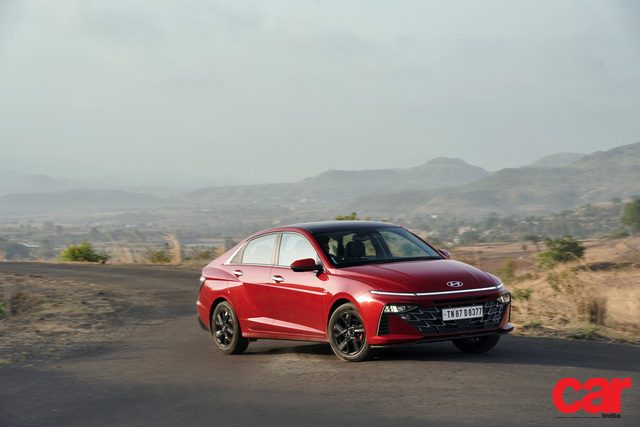
Story: Joshua Varghese
Photography: Sanjay Raikar
Following the first drive on the new Delhi-Mumbai Expressway, it was time to see how the latest Hyundai Verna would hold up in the demanding urban conditions of Pune. Shortly after the launch of the car, I began coming across quite a few on the road. The hatred for its radical front-end design seems to have abated both on social media and in real life. Undoubtedly, the car looks a lot better physically than in photographs. It sits low to the ground, is as good as its rivals when it comes to sharpness in design, and in the top-end model, the contrast offered by the paint and the black wheels (along with the red calipers) give it a lot of points in the looks department.
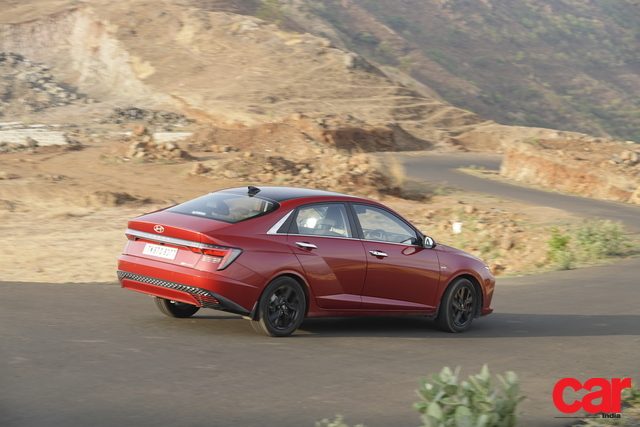
Personally, the fastback-inspired tail-end remains my favourite angle of the new Verna and the lights at the rear ensure great visibility. Whatever doubts anyone may have had about the illumination power of the low headlights can be shelved because they do their job rather well. However, being placed slightly lower than on other cars, those may get dirty during the rainy season. We will leave that for scrutiny during a long-term test.
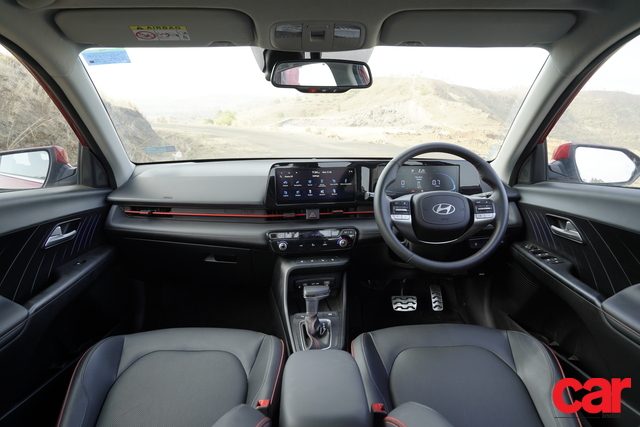
Life in the cabin is one of Hyundai’s strengths and this new interior is just as comfortable for short commutes as for long road trips. The leatherette upholstery adds a premium feel without compromising on comfort and the driving position is among the most usable in its class. With generous levels of black plastic and red highlights, the sporty side has been taken care of too. A 10.25-inch touchscreen is complemented by an eight-speaker Bose sound system and the interface is easy to use, be it over Bluetooth or Android Auto/Apple CarPlay (wired only). The quality of music playback should be up to expectations for most users but audiophiles may need to explore the settings to extract the most from the unit.
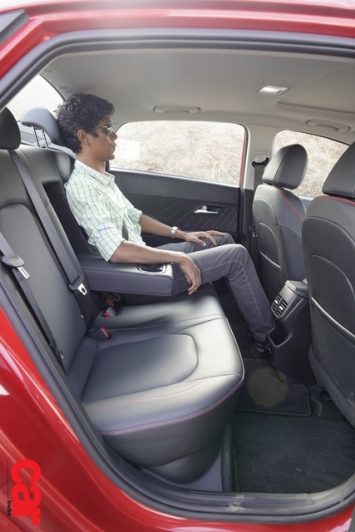
When I exchanged the driver’s seat for some time in the back row, it was immediately evident that it was among the most spacious in the segment and although the ingress/egress may be a little difficult for the elderly, once seated it is as good as being in a lounge. With ample leg-, head-, and shoulder-room, this car is capable of seating four adults in great comfort and up to five could find reasonable space. Although Hyundai have not shared the dimensions of the boot on their website, I can say that it has enough volume to completely swallow a small family’s luggage for a road trip.
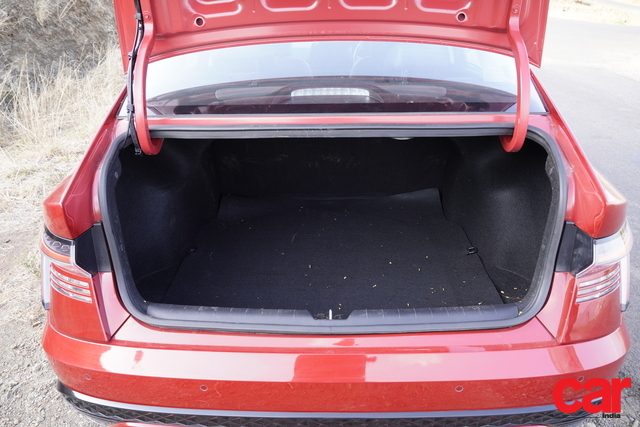
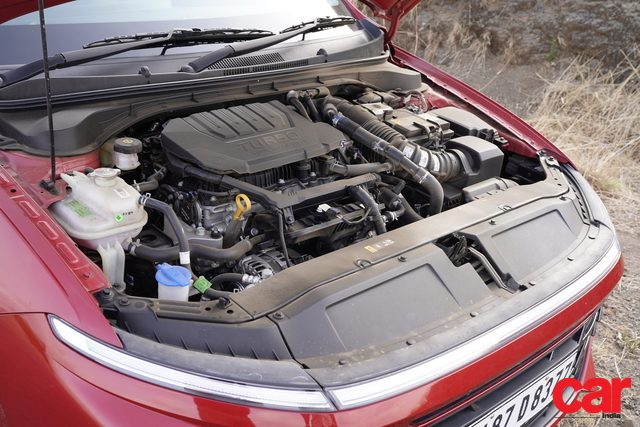
Under the bonnet is a 1.5-litre, turbo-charged, four-cylinder petrol engine which also happens to be the most powerful in its class. The dash from 0 to 100 km/h is rapid and the engine does not feel overworked throughout that exercise. There is plenty of low-end torque to draw from and the mid-range is equally potent and it only seems to wane closer to the red-line. It dishes out 160 hp at 5,500 rpm and has a peak torque of 253 Nm between 1,500 and 3,500 rpm; the seven-speed DCT working seamlessly with this power unit. The shifts are precise and smooth and there is no lag in response even when shifting using the paddle-shifters which are exclusive to this variant.
So far as ease of driving goes, this car is up there with its peers. In Comfort mode, the steering is light, great for low-speed manoeuvres and parking while it becomes more positive in Sport mode, making the drive that much more enjoyable.
We were already impressed by the Verna’s high-speed stability on the highway at speeds around the 120 km/h-mark and this time, we also got a chance to throw it around some corners at a reasonable pace. The MacPherson strut and torsion beam axle combination returns a ride quality that is pliant in spite of being set up on the stiffer side. Around fast corners, the car remains composed; no unwonted pitch and roll to render it unstable or scary. As for the set-up, I believe Hyundai have found a good common ground between comfort in town and predictable response when driven fast.
On a properly marked road, Hyundai’s ADAS features work well. My favourites include the Adaptive Cruise Control and Lane Assist. However, in the chaotic confines of a metropolitan city, it may be best not to rely on them.
This fully loaded Verna will set you back by Rs 17.38 lakh (ex-showroom), which is not bad when one considers that other cars in this segment do not offer such an extensive suite of assistance systems. The combination of its attributes does allow the Verna to be on a par with a GT car in terms of requirements and, from the time I spent with it, it does feel like the car has what it takes to cover long distances without stress. The new Verna just made sedans great again for Hyundai.
Also Read: Bad Boi Drifts School


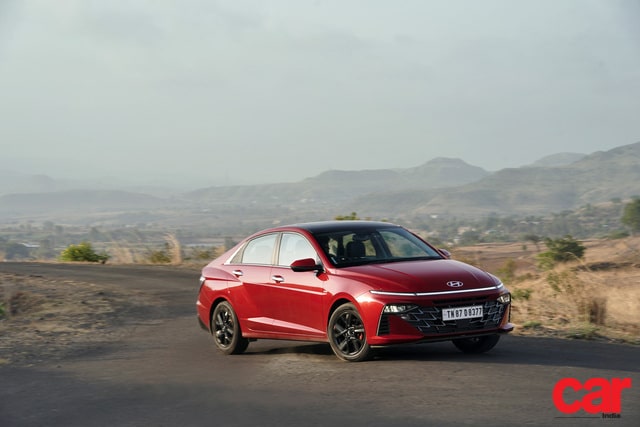









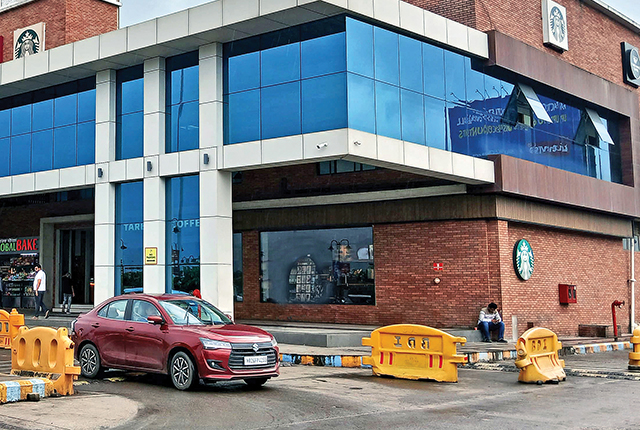








Leave a Reply